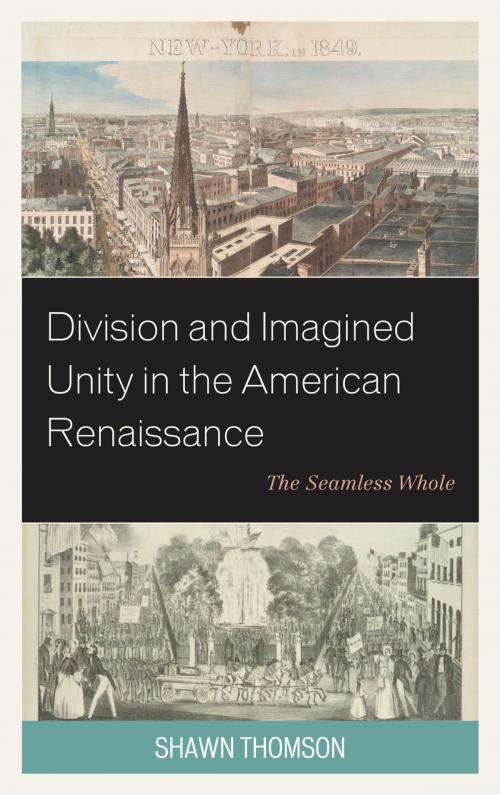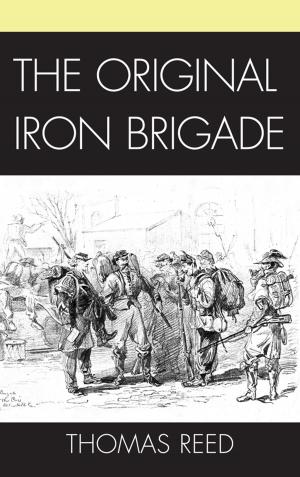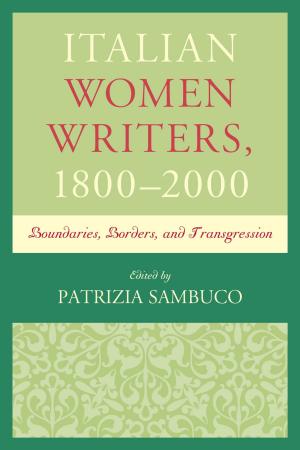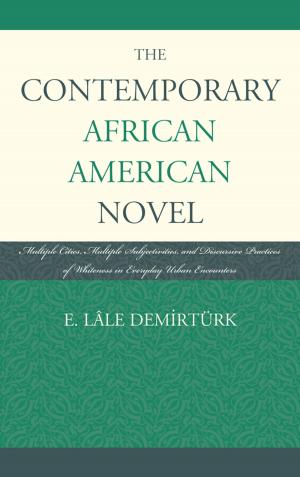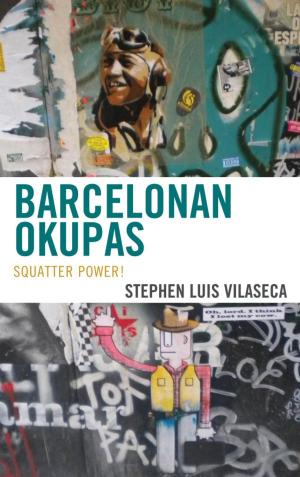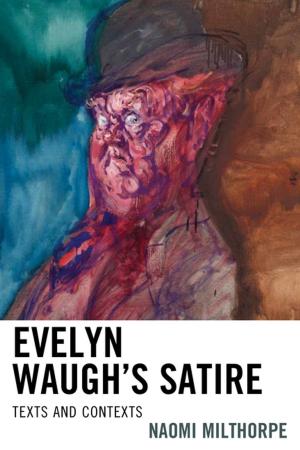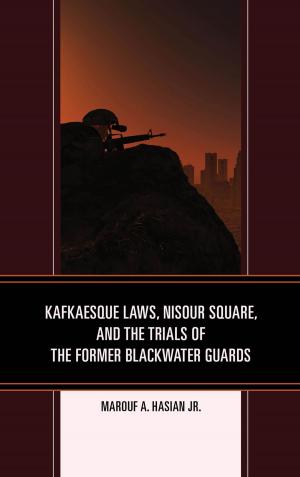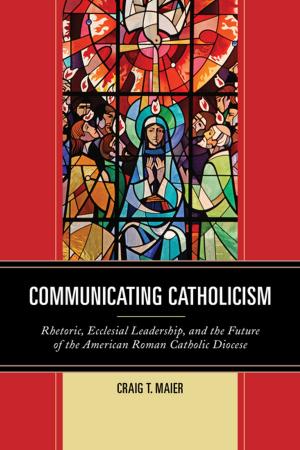Division and Imagined Unity in the American Renaissance
The Seamless Whole
Nonfiction, Entertainment, Drama, Anthologies, History, Americas, United States, 19th Century| Author: | Shawn Thomson | ISBN: | 9781683931102 |
| Publisher: | Fairleigh Dickinson University Press | Publication: | November 15, 2017 |
| Imprint: | Fairleigh Dickinson University Press | Language: | English |
| Author: | Shawn Thomson |
| ISBN: | 9781683931102 |
| Publisher: | Fairleigh Dickinson University Press |
| Publication: | November 15, 2017 |
| Imprint: | Fairleigh Dickinson University Press |
| Language: | English |
In examining the era’s multivalent tropes of seams and seamlessness, Thomson provides an innovative understanding of the interplay between division and unity in the thought, culture, and literature of the American Renaissance. New insights are offered on works by major authors such as Nathaniel Hawthorne, Frederick Douglass, Walt Whitman, Herman Melville, Emily Dickinson, Henry David Thoreau, Solomon Northup, Harriet Jacobs, and Elizabeth Stoddard, along with marginal figures. Thomson expands the canon by recovering the unknown authors Charles Edward Anthon and John S. Sauzade and recognizing their works as vital to the American Renaissance.
Taking the 1844 display of the Holy Tunic at the Cathedral of Treves as its point of departure, Thomson sheds light on the controversy of the seamless garment in the New England press and explores its transmutation in Anthon’s Pilgrimage to Treves, Hawthorne’s The Scarlet Letter, Dickinson’s poetry, and Melville’s major novels. In excavating seamlessness as a cultural artifact of the American Renaissance, Thomson pursues a cultural studies approach to the fabric of antebellum life. Thomson reads the seams of material culture to reveal the meaning of the dressing gown and the keepsake in Dickinson’s and Stoddard’s lives and letters. Thomson positions Sauzade’s Dickensian novel The Spuytenduyvel Chronicle as one of the first great works of the American metropolis and explores the spiritual-material dichotomy of the slave narratives of Douglass, Jacobs, and Northup. This book further reassesses the bitter literary rivalry between Melville and George Washington Peck, re-conceptualizes Melville the author through his relationship to the divided nation, and illuminates his failed idealism as a literary artist in Pierre. Thomson’s approach to the interrelationship of material culture, technology, and the modes of literary production creates a new sense of the American Renaissance as a paradoxical seamless whole wherein its seams are exposed for all to see.
In examining the era’s multivalent tropes of seams and seamlessness, Thomson provides an innovative understanding of the interplay between division and unity in the thought, culture, and literature of the American Renaissance. New insights are offered on works by major authors such as Nathaniel Hawthorne, Frederick Douglass, Walt Whitman, Herman Melville, Emily Dickinson, Henry David Thoreau, Solomon Northup, Harriet Jacobs, and Elizabeth Stoddard, along with marginal figures. Thomson expands the canon by recovering the unknown authors Charles Edward Anthon and John S. Sauzade and recognizing their works as vital to the American Renaissance.
Taking the 1844 display of the Holy Tunic at the Cathedral of Treves as its point of departure, Thomson sheds light on the controversy of the seamless garment in the New England press and explores its transmutation in Anthon’s Pilgrimage to Treves, Hawthorne’s The Scarlet Letter, Dickinson’s poetry, and Melville’s major novels. In excavating seamlessness as a cultural artifact of the American Renaissance, Thomson pursues a cultural studies approach to the fabric of antebellum life. Thomson reads the seams of material culture to reveal the meaning of the dressing gown and the keepsake in Dickinson’s and Stoddard’s lives and letters. Thomson positions Sauzade’s Dickensian novel The Spuytenduyvel Chronicle as one of the first great works of the American metropolis and explores the spiritual-material dichotomy of the slave narratives of Douglass, Jacobs, and Northup. This book further reassesses the bitter literary rivalry between Melville and George Washington Peck, re-conceptualizes Melville the author through his relationship to the divided nation, and illuminates his failed idealism as a literary artist in Pierre. Thomson’s approach to the interrelationship of material culture, technology, and the modes of literary production creates a new sense of the American Renaissance as a paradoxical seamless whole wherein its seams are exposed for all to see.
